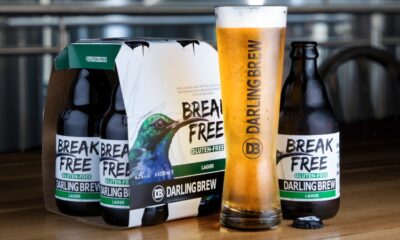Beverages
The Definitive Guide To European Beers
Do you know your beers? SAB has hit us with some knowledge to teach us about the origins of some of the most delicious beers from around the world.

Brewing has been around for millennia. Once ancient tribes started cultivating crops, it didn’t take long before people discovered that wet loaves of bread or grain fermented by wild yeast led to a delicious, invigorating beverage. Brewing quickly became part of everyday life and spread from Mesopotamia to other parts of Asia, Europe and beyond.
Over the course of a long and much-loved history, many varieties of beer have developed. Although the academic study of beer styles is a comparatively recent pursuit, the practice of distinguishing between types of beer dates back to at least 2000 BC.
Nowadays, beer styles are distinguished from one another based on four categories: provenance, local tradition, ingredients, and empirical tradition, which is further broken down into aroma, appearance, mouthfeel, and flavour.
Let’s take a closer look at a few varieties from around the world.
Beer in Europe
Porter and Stout

Stout is the evolution of porter beer. Originating in London around 1720, porters quickly gained popularity amongst workers throughout the city. A dark beer with a strong flavour, porters not only took longer than other beers to spoil, they were also significantly cheaper. Unsurprisingly, it didn’t take before porter breweries started popping up all over the city, with large volumes being exported to Ireland.
It was in the 1800s that stout emerged. Although very similar to porter, this new style was stronger both in flavour and alcohol content. To this day, the replacement of malted barley with roasted unmalted barley remains the only real difference between the two styles.
With the resurgence of the craft beer movement, it is becoming increasingly tricky to tell the difference between porters and stouts as the names are often used interchangeably.
Saison
Around the same time that the Brits were taking to porter, farmers in the Wallonian countryside in the South of Belgium were starting to brew a new beverage. Described as a “rustic agrarian beer”, saison – meaning “season” in French – was brewed in autumn, fermented in winter and ready for consumption by seasonal labourers (“les saisonniers”) by the hot summer faming months.
Originally, these fruity farmhouse ales had a low ABV of around 3.5% making them a delicious thirst-quenching beverage, without affecting farmworkers productivity. Contemporary saisons are brewed with a higher ABV of between 5-7%.
After a serious dip in popularity, saisons have made a comeback in the past decade or so, with many American craft breweries taking to the style. No two saisons are the same and apart from them all being fruity summer ales, there isn’t one unifying characteristic. Some words used to describe the flavour of a saison are spicy, herby, peppery, earthy, citrusy, sweet, tart, and tangy. Pair a saison with an equally summery dish, such as a kale Caesar salad, or a lemony roast chicken.
Bock

Bock originates from Einbeck, Germany and was first brewed as a lightly hopped ale in the 14th century. By the 1700s, bock had been taken on by brewers in Munich who developed the style into the lager we know and enjoy today. Bock has a long history of being brewed and consumed by Bravarian monks and was often drunk on religious occasions, such as Christmas, Lent and Easter.
The style most in line with the brew is the dunkel bock, which is sweeter and more alcoholic than a standard bock. Bock is known for its deep, complex and rich flavour. It is full-bodied and although some people like to pair it with German meat, such as bratwurst, it is often referred to as “bread-beer” and many see it as a meal in itself.
More stuff on the sweet golden nectar of the gods:
Are You Using The Right Glass For Your Beer?
Which South African University Produced The Best Beer?














Stefan Reinecke
October 9, 2015 at 08:47
Really interesting read. I’ve never heard of a Saison beer before, and would probably not be it’s biggest fan. Give me a good Stout any day, and I’m a happy man